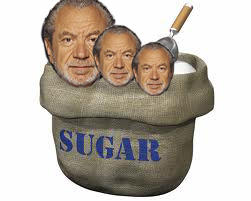Portraiture has developed and evolved since the begining when Royalty has Artists paint them and their family. In essence the the reaon for the subjects wanting them taken is the same, to show wealth and fame. But now instead of the Royals it appears to be the famous wanting to show how divine they are. Photographers such as Tony Vaccaro see through this. He says celebrities are pre-packed, fake. You need to strip them down to who they really are. Otherwise theese portraits are a lie.
Pablo Picasso hired Vaccaro to take portraits of him. When he first started the shoot Picasso was posing in ways as such it wasn't him. In essence he was pretending to be some he was not, Vaccaro pretended his camera was not working and Picasso automatically relaxed at this moment Vaccaro striked getting a picture true to him self and Picasso.
The idea of a portrait being a lie was something Diane Arbus explored. She was hired by the Matthaei family to have portraits done during the christmas period. The being a very well to do, high staus family got this done annually. The pictures Diane took were almost a reflection of her own insecurities as she grew up in simular circumstances, her picture of the youngest daughter Marcella is haunting and expressive especially in the eyes.
Theese portraits show the truth. The cracks in the family and in the generation of the time.
Where Portraits used to very much be abou the person infront of the camera, about their life and the style they had it has now transpired more into the person behind the camera, why they took the picture that way and what it meant. With Diane Arbus it was very much that she pictured mostly people on the "fringe of society" those we we'rnt used to seeing in the mainstream such as the disabled, homosexual,dwarfs,giants,nudists,transvestites, circus performers and transgendered people.
Such as in the photobelow.
By taking these photos she showed that she herself was more interested the people in theese photos than those such as celebrities and those of high status who used to be the focus of portriture.
 I began by saving both the image of Alan Sugar's head and the sugar to my desk top. I then imported the images into Photoshop where I then used the Lasso key (L key) using this I went around his head outlining the part I needed to make the above image. I then used the quick mask key (Q Key) to mask everything that isn't selected red. From here I can edit out any bits I don't need such as extra bits of hair and neck. I then selected command J to make it into a new layer, I then moved it onto the picture of the sugar using the V key. I then used Command T so I could move and change the size of the head. I repeated this to make the final image.
I began by saving both the image of Alan Sugar's head and the sugar to my desk top. I then imported the images into Photoshop where I then used the Lasso key (L key) using this I went around his head outlining the part I needed to make the above image. I then used the quick mask key (Q Key) to mask everything that isn't selected red. From here I can edit out any bits I don't need such as extra bits of hair and neck. I then selected command J to make it into a new layer, I then moved it onto the picture of the sugar using the V key. I then used Command T so I could move and change the size of the head. I repeated this to make the final image. 